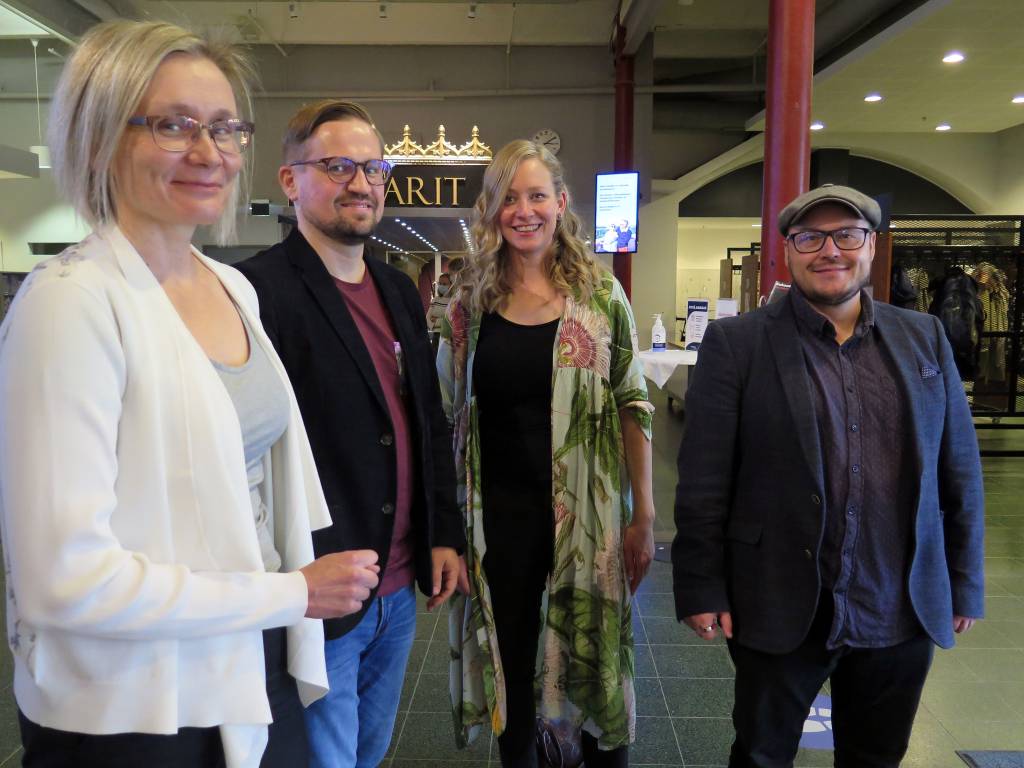
A Dim Light of Dawn: Finnish Post-Cold War Experiences Between East and West, 1989–1995
Funded by the Academy of Finland 2021–2025
Researchers: Tuomas Tepora (PI), Aapo Roselius & Ville Yliaska (starting in 2022)
The aim of the project is to analyze the history of experiences in early-1990s Finnish society during a major change that concerned all the sections of the society. One of the defining characteristics of a social change is the uncertainty about the future, a liminal experience. The project studies how these uncertainties, expectations and fears manifested in the lives of the citizens and what means people adopted to share and cope with the events of the time. The time frame of the study, 1989–1995, ends in the 1995 enlargement of the European Union. It approaches the topic from three interconnected perspectives, all of which are united by the experience of change. Three themes are: economic depression, neo-patriotism and the European integration.
The project examines the concept of experience in many levels. “Our project asks how the citizens experienced and lived the post-Cold War political and social changes that reformulated the concepts of nation and welfare state. We understand ’experience’ as a social process in which individual and small-group experiences tied to a time and place are transformed into a shared, experiential narrative within a larger collective. We pay special attention to how the expressed experiences and emotions portrayed the expectations about the future”, project leader Tuomas Tepora sums.
Tepora joined HEX in September 2021. His research interests include the histories of nationalism and the cultural history of war in connection with the 20th-century conflicts. Tepora has studied and published on the history of emotions and experiences, and he´s interested in the development of the methodology and theory of the fields. Tepora have previously worked as a Senior Lecturer in history at the University of Helsinki and held a three-year position at the Helsinki Collegium for Advanced Studies, and a visiting fellowship at the Centre for the History of Emotions at Queen Mary College, University of London.
Tepora is happy to conduct research on the history of emotions in excellent environment at HEX: “I think, our project will benefit from the exchange of ideas and collegial support that HEX provides us with. Our project is excited to contribute to the expertise of the CoE and hope to strengthen its profile. I am looking forward to attending the seminars and engage in the activities at HEX”, Tepora concludes.
Lived religion in medieval Finland
Funded by Svenska Litteratursällskapet i Finland (Swedish literature society in Finland) 2021–2024
Researchers: Sari Katajala-Peltomaa (PI), Marika Räsänen, Sofia Lahti & Anna-Stina Hägglund
The lived religion in medieval Finland -project starts with the premise of religion as a dynamic social process that both requires and creates active participation, emotions and experiences. Religion is seen as a way to interact and participate (with)in a community – as a performative space. The main focus of the project is on the interaction with a saint (the Virgin Mary, Saints Anna, Henrik and Birgitta). Saints’ cults and interaction with a saint were a hallmark of medieval European culture, they were both local and translocal. The project provides a new overview of a theme that has so far received less attention from scholars. The sources used by the project include liturgical manuscripts, sermons and wills, as well as various artifacts associated with the saints. The new methodology applied by the project enables a contribution to international academic discussions on lived religion and religious practices. The project will also produce material for a Nordic database, which will enable a more profound comparative and interdisciplinary analysis in the future.
Project leader Sari Katajala-Peltomaa sees “experience” as an important concept in the project but emphasizes also the empirical approach: “As “lived religion” is the thematic focus and methodological background of the project as well as one of the thematic strands of HEX, the synergy is evident and we have already started collaboration. “Experience” is the logical next step within the studies of lived religion, and this conceptual development will be part of the project’s work as well. However, as there are considerable lacunas in historical knowledge of devotees’ interaction with saints in medieval Finland, the basic, empirical research will also occupy a major role within the project.”
Katajala-Peltomaa has made a long career in Tampere university and HEX. She has studied medieval lived religion already before HEX: “My work on the interaction with a saint has been based on comparative approach but recently the Nordic material has become more prominent in my work. I am a member of the scientific board of the Swedish Mapping Lived Religion project, and the collaboration has ascertained the need for this kind of research also for Finland”, she describes her interests as a historian.
Lived Religion and the Changing Meaning(s) of Disability from the Late Middle Ages to the Industrial Revolution
Funded by the Academy of Finland 2021–2025
Researchers: Jenni Kuuliala (PI), Riikka Miettinen & Daniel Blackie (starting in 2022). The project will also recruit a postdoctoral researcher in spring 2022
The project concentrates on the significance of Christian lived religion in understanding and experiencing disability, analysing the ways religious rituals, views, and practices framed and shaped bodily and mental difference. By emphasising religion as a lived experience and taking a longue durée approach to disability history from the Late Middle Ages / Renaissance to the Industrial Revolution (c. 1450–1850), this project is the first-ever social history of disability to range across traditional periodisations to examine the significance of religious beliefs and practices to the emergence of disability as a social category of modernity. In doing so, the project also evaluates the ways in which the major cultural transformations of this period impacted the role and relative importance of religion as a framework shaping conceptions and experiences of disability. Experience is an important approach and analytical tool in the analysis. As the project is particularly focusing on lived religion, it is clearly linked with one of HEX’s main points of interest.
The leader of the project, Jenni Kuuliala, has worked in HEX for several years and studied the disability history from different perspectives: “I am trained as a medievalist and have been working on medieval disability history for quite a while, as well as done some public disability history work. Recently I’ve been particularly interested about the religious experience of illness and disability in the early modern period. Working in HEX with the concepts of lived religion and experience made me think about the possibilities that these approaches could have for disability history. This, as well as my discussions with Riikka and Daniel then led to the idea to apply for this research project”, she outlines, when we talk about working in HEX and Kuuliala´s own background as a researcher.
Translocalis project
Funded by Alfred Kordelin Foundation 2021–2023 (Major Culture Project Grant)
Researchers: Heikki Kokko (PI), research assistants
The phenomenon of letters to newspapers developed into a nationwide and pervasive culture of local letters in the mid-1800s Finnish-language press. A characteristic feature of this culture was that the readers’ letters published in the press were written in the names of local communities. “Local letters” often told about every day local things that had happened in some parish. Usually, the topics included information about yields, the state of health of the inhabitants and curious incidents. However, there was also more general discussion about social reforms and abstract reasoning on topics like for example, what is society, nation or publicity. The writers of the letters came from the wide spectrum of the society. There are hundreds of identified writers that were either peasants or came from the lower social layer. Therefore, the letters are a good source for ‘history-from-below’ approach. Indeed, the local letters are the first larger source of this kind in the Finnish-speaking culture. They represent the voices of early civic society in Finland. Translocalis project will carry out research on the nationwide phenomenon of readers’ letters in the 19th century Finnish-language press and publish a digital open-access database of the readers’ letters in cooperation with the National Library of Finland.
Translocalis project leader Heikki Kokko describes the database as “database of experiences of the early civil society in Finland. There is material consider all Hex themes: Lived welfare state, Lived nation and Lived religion”, he explains.
Previously Kokko has studied the history of the modern self and history of experience of society in the 19th century. “I found this phenomenon of letters to the press about ten years ago when I was working on my PhD thesis. I guess I got excited about the possibilities of this material”, Kokko replies to the question on how he came up with the idea of the database project.

